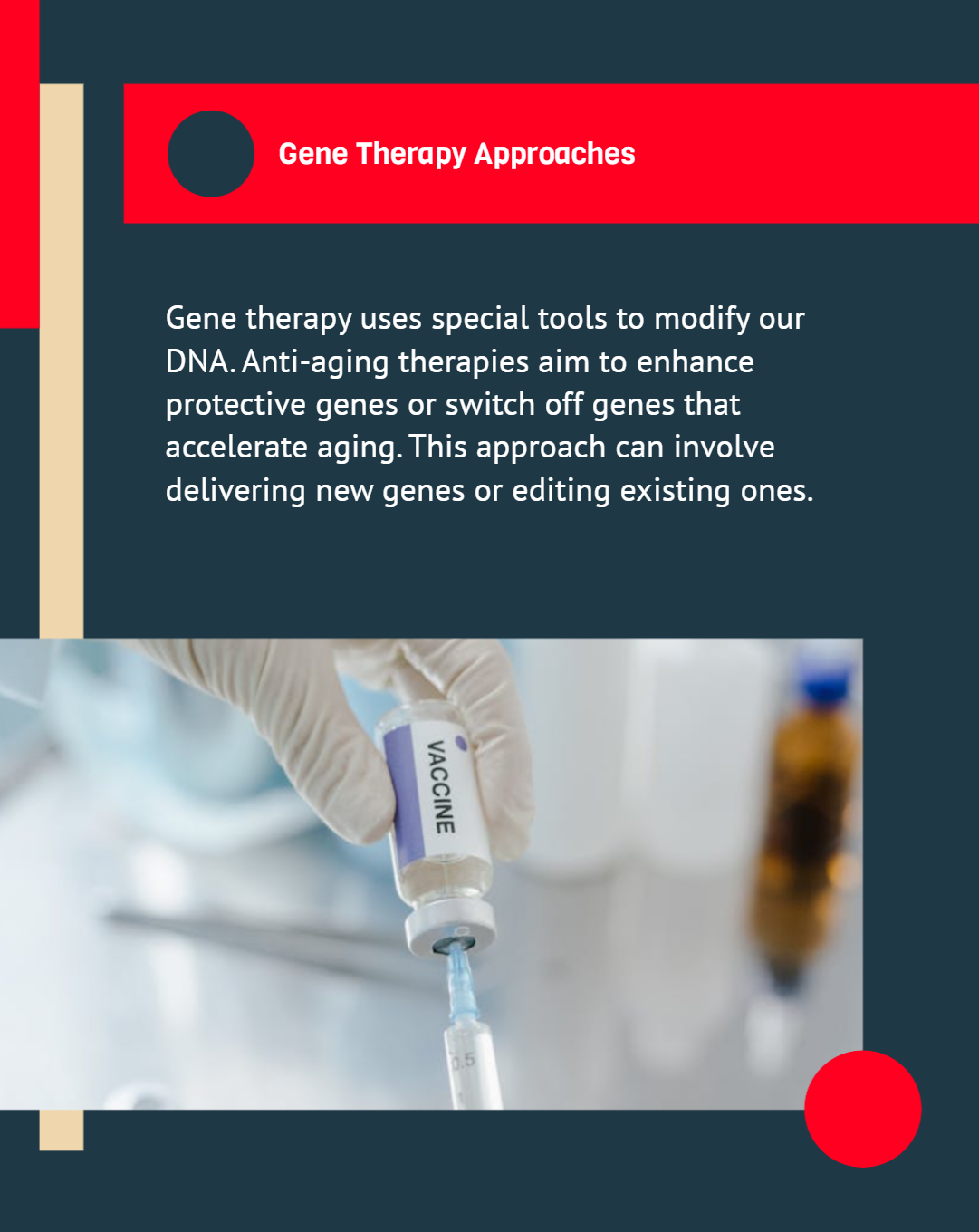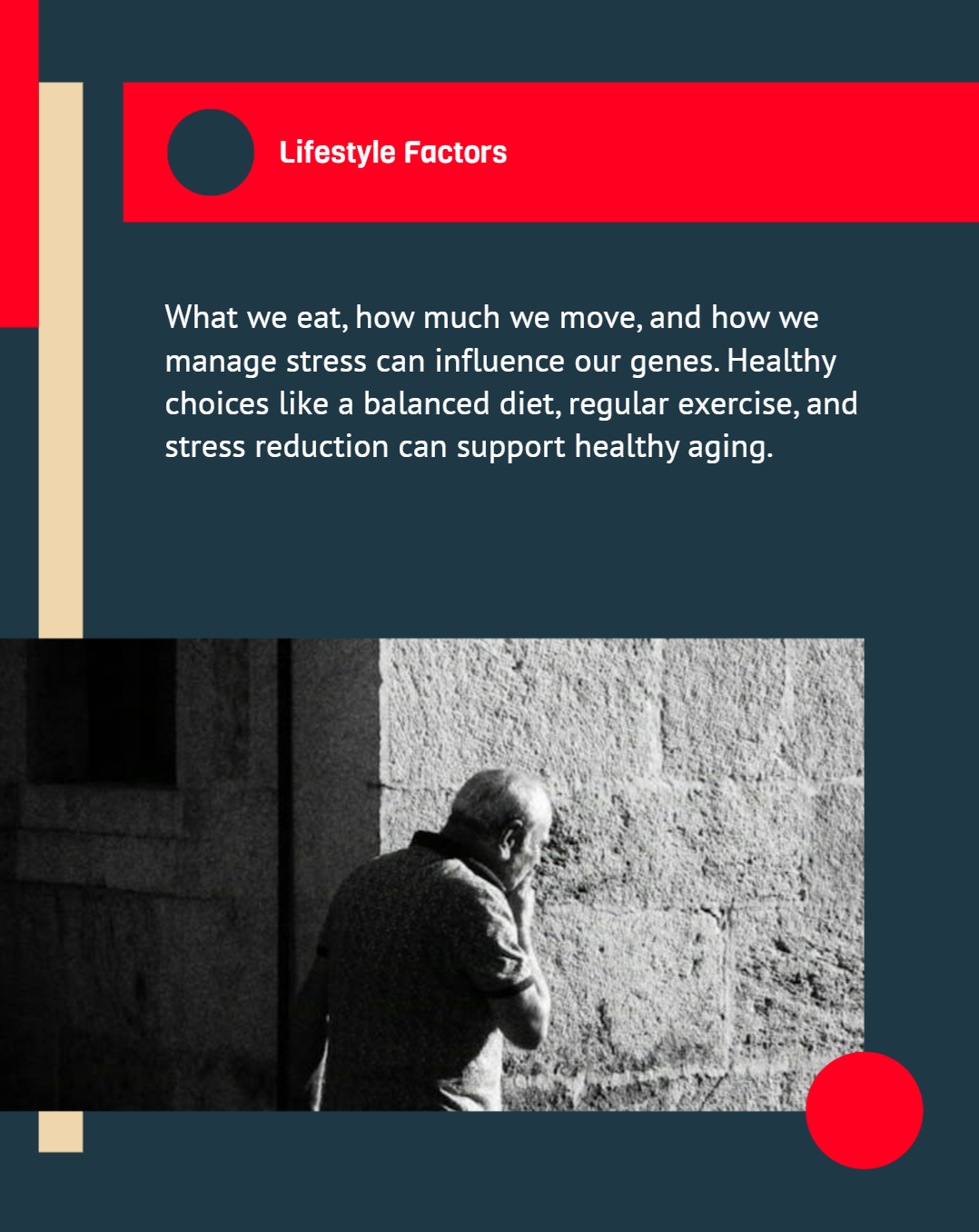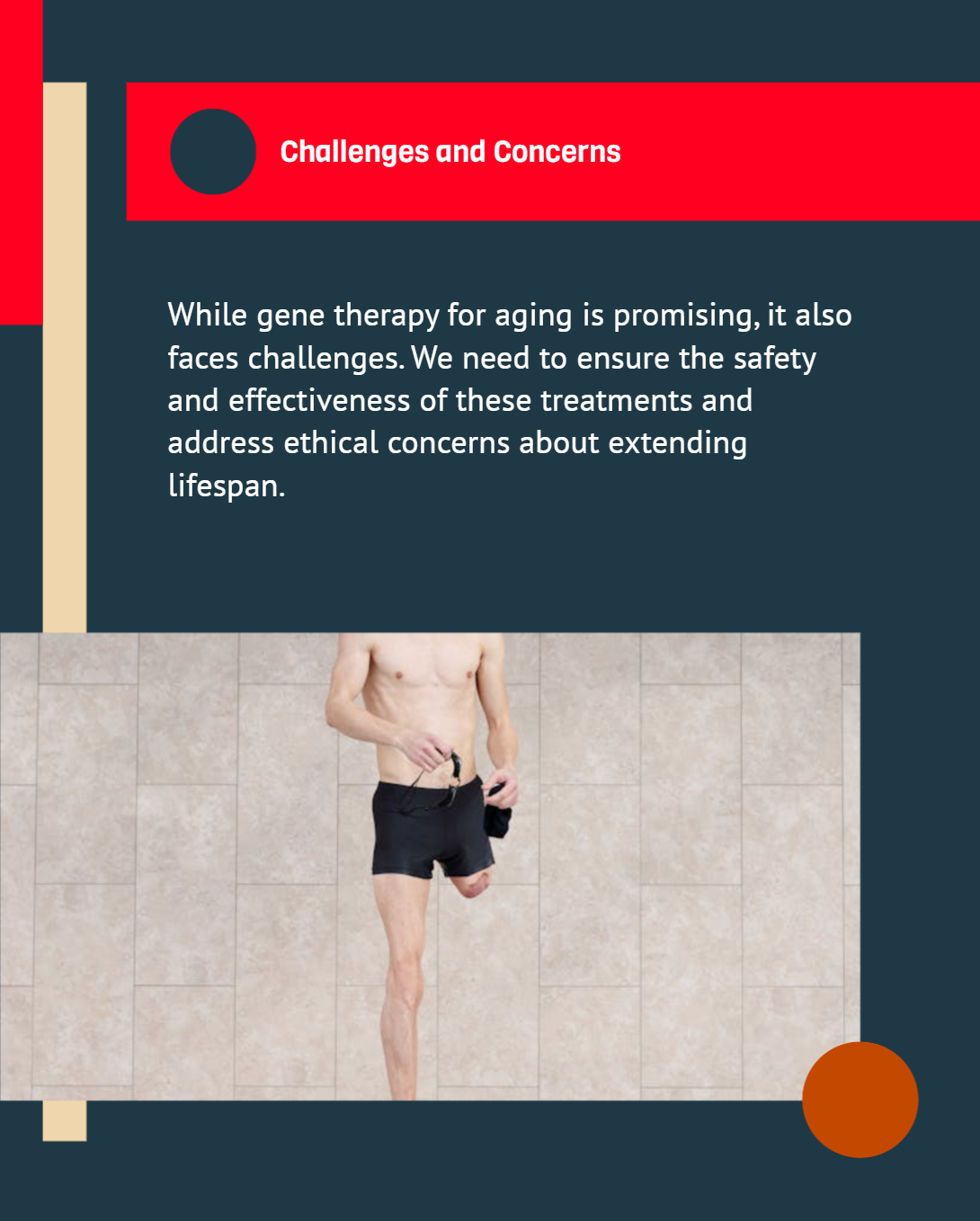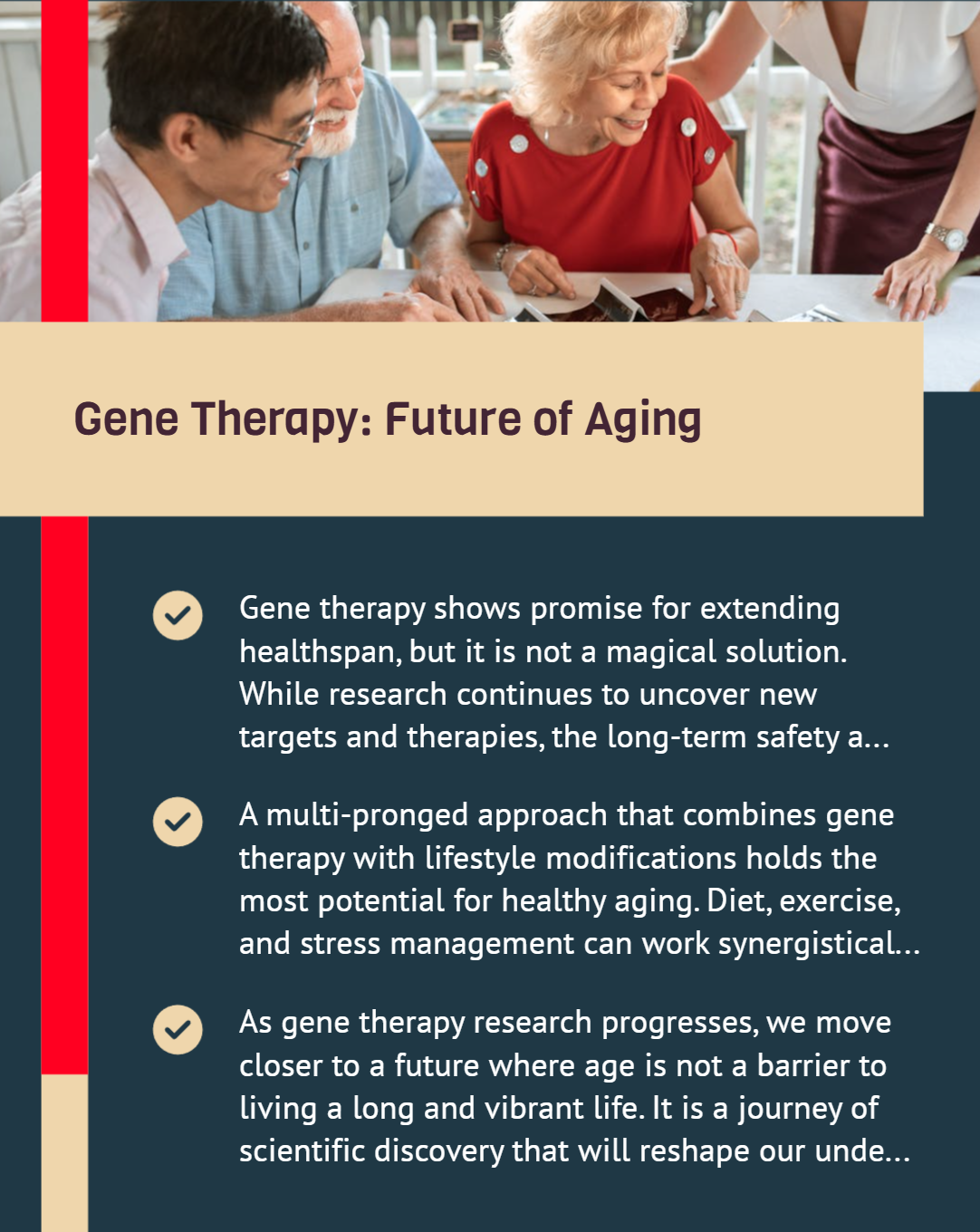Aging happens to everyone, yet it has remained one of the great mysteries of biology for centuries. From wrinkles to weaker muscles, the human body undergoes countless changes as it grows older. As science advances, researchers are discovering new ways to target the aging process directly, and one of the most exciting areas of study is anti-aging gene therapy. In this article, we explore how gene therapy might slow or even reverse certain aspects of aging, what science reveals about our genetic blueprint for longevity, and the future possibilities that could change how we live and age.
Aging is the gradual decline in the body’s ability to repair and maintain itself. While we might think of aging as something that simply happens over time, it is much more complex than that. Our cells divide over and over again throughout our lives, but each division carries slight differences in how our DNA is copied. Over time, these differences or errors can build up, leading to the familiar signs of aging.
Cellular Damage and Repair
One main factor in aging is cellular damage. Every cell in our body handles multiple tasks—producing energy, removing waste, and creating important molecules to keep us alive. During these processes, byproducts, such as free radicals, can damage cell components like proteins, lipids, and DNA. While cells do have repair mechanisms, they are not perfect. As more damage accumulates, the cell’s ability to function declines.
Telomere Shortening
Telomeres are caps at the ends of our chromosomes that protect genetic information during cell division. Each time a cell divides, these telomeres get shorter. Once telomeres become too short, the cell can no longer divide properly, leading to cellular aging and death. This process has become a critical area of research for scientists exploring how to slow aging, as maintaining or lengthening telomeres might extend a cell’s life cycle.
Many genes influence how quickly we age. Some genes help repair damaged DNA, others regulate inflammation, and some control how effectively our cells produce energy. When certain genes are inactive or less active, the body might face more oxidative stress or slower tissue repair, accelerating aging. On the flip side, genes that promote longevity encourage efficient energy use and strong cellular repair processes.
The Role of Sirtuins
Sirtuins are a family of proteins that play a big part in aging and longevity. They regulate many important processes, such as DNA repair and inflammation. High sirtuin activity has been linked to slower aging and improved health. Scientists continue to explore ways to boost sirtuin function to delay age-related diseases and extend healthy lifespan.
FOXO Genes
FOXO genes help regulate how the body responds to oxidative stress and protect cells from damage. They also support cell survival in difficult conditions. Research has revealed that certain genetic variants of FOXO genes correlate with longer life in multiple species, including humans. If we learn how to tweak FOXO genes or enhance their expression, we might uncover new methods to slow aging.

Gene therapy involves altering DNA sequences to fix or replace harmful genetic material. In anti-aging research, gene therapy typically aims to enhance protective genes or limit genes that accelerate aging. The process can involve delivering specially engineered genes into cells or using molecular tools to modify existing genes.
Telomerase is an enzyme that helps build and maintain telomeres. In most adult human cells, telomerase activity is low or absent. By boosting telomerase expression, researchers hope to maintain or restore telomere length, possibly extending the healthy lifespan of cells.
Mitochondria are the energy factories of our cells. Genetic damage within the mitochondria can reduce their performance, which in turn impacts overall cell vitality. Gene therapy targeting mitochondrial genes might restore energy production and reduce harmful byproducts that lead to cellular aging.
CRISPR is one of the most promising gene-editing tools. It allows scientists to cut and replace DNA segments with high precision. This technology could be used to remove or fix genes linked to age-related diseases. At the same time, CRISPR can also help introduce longevity genes or enhance existing protective genes.
CRISPR, short for Clustered Regularly Interspaced Short Palindromic Repeats, is a breakthrough that has revolutionized genetic engineering. It uses a special protein known as Cas9, which acts like a pair of molecular scissors. By customizing a short piece of guide RNA, scientists can direct Cas9 to a specific location on DNA. Then, Cas9 can cut the DNA, allowing researchers to make edits with great accuracy.
Advantages of CRISPR in Aging Research
Ethical and Safety Considerations
While CRISPR is a remarkable tool, it must be used carefully. Small errors in gene editing can create unintended consequences. Researchers also face ethical questions, such as whether we should enhance genes to live much longer. For now, most CRISPR research in aging focuses on animal models rather than humans, ensuring safety and effectiveness before human studies move forward.

Gene therapy shows promise, but it is not the only way to support healthy aging. Environmental and lifestyle factors can have a big impact on how our genes behave. These changes are known as epigenetic modifications, where certain compounds attach to DNA and influence how genes are expressed.
Diet and Nutrition
A diet rich in antioxidants, vitamins, and minerals can support DNA repair and reduce oxidative stress. Foods like leafy greens, berries, and whole grains provide essential nutrients that help cells function at their best. Studies suggest that calorie restriction or a well-managed diet can boost sirtuin and FOXO gene activities, possibly delaying aging.
Exercise and Physical Activity
Regular physical activity strengthens the cardiovascular system, boosts metabolism, and supports healthy hormone levels. Exercise also reduces inflammation, which can help lower the risk of chronic diseases linked to aging. In many animal studies, exercise has shown a clear correlation with extended lifespan, partly due to healthier gene expression patterns.
Stress Management
Chronic stress triggers high levels of cortisol and other stress hormones. Over time, these hormones can damage cells, weaken the immune system, and interfere with healthy gene function. Simple practices like meditation, yoga, or even a daily walk can help manage stress. By keeping stress under control, we might improve how genes involved in aging and disease prevention operate.
Research on anti-aging gene therapy is thriving. From CRISPR to targeted viral vectors, scientists keep pushing boundaries. While gene therapy for aging is still in its early stages, several experiments have shown exciting results in animal models.
Telomerase Activation Studies
Some animal studies have used gene therapy to activate telomerase, successfully extending the lifespan of mice. In these studies, researchers injected a modified virus carrying the telomerase gene. The treated mice showed healthier tissues, improved organ function, and a longer life compared to the untreated groups. However, many questions remain about the safety of such treatments in humans.
Gene Editing for Muscle Regeneration
Age-related muscle loss, known as sarcopenia, leads to weakness and poor mobility. By editing genes that control muscle development, scientists aim to delay or reverse muscle decline. Early results in rodents are encouraging, showing better muscle mass and function. If these effects translate to humans, it could significantly improve the quality of life for older adults.
Protective Genes in Model Organisms
Certain organisms, such as the naked mole rat, can live far longer than expected for their size. By studying the genes that keep these animals healthier for longer, scientists hope to find new targets for gene therapies that can benefit humans. The results may also inspire gene-based treatments that boost resilience to age-related damage.

While anti-aging gene therapy holds great promise, it also faces significant obstacles. Safety concerns, ethical considerations, and the complexity of the aging process all stand in the way. Aging is not driven by a single gene but by a wide range of genetic and environmental factors. Therefore, a single therapy might not be enough to solve the aging puzzle.
Long-Term Safety
Any gene therapy that attempts to slow or reverse aging must work over a long period. Adverse effects might not show up until years later. As a result, clinical studies will need rigorous long-term monitoring to ensure treatments do more good than harm.
Accessibility and Cost
Advanced gene therapies tend to be expensive and technically challenging to administer. Many of these therapies require specialized equipment and training. This poses a big question: if a highly effective anti-aging therapy emerges, how will we ensure it is accessible and affordable?
Regulatory Hurdles
Regulatory bodies, such as the Food and Drug Administration (FDA) in the United States, must approve all medical treatments before they reach the public. Gene therapies face close scrutiny due to their potential risks. To receive approval, treatments must show both efficacy and safety in well-controlled clinical studies.
Below is a simplified table that summarizes common approaches to anti-aging, including both lifestyle options and emerging gene therapies:
| APPROACH | METHOD | ADVANTAGES | DRAWBACKS |
|---|---|---|---|
| Lifestyle Changes | Balanced diet, exercise, and stress reduction | Low cost, broad health benefits | Requires discipline and consistency |
| Antioxidant Supplements | Vitamins C, E, and others | May reduce oxidative stress | Overuse may disrupt bodily balance |
| Telomerase Gene Therapy | Introducing the telomerase gene via viral vectors | May lengthen telomeres, delay aging | Risk of overactive cell growth, unknown long-term |
| CRISPR Editing | Precise DNA cutting and editing | High accuracy, potential for synergy | Ethical concerns, costly, not fully tested in humans |
| Mitochondrial Gene Therapy | Repair or replace faulty mitochondrial DNA | Boosts energy production, reduces damage | Complex delivery methods, still under research |
Experts envision a future where anti-aging treatments include combinations of therapies—some that target telomeres, others that fix mitochondrial DNA, and still others that boost protective genes. We may even see personalized approaches where a person’s specific genetic makeup is analyzed to find the best treatment plan.
Personalized Medicine
As genetic testing becomes more affordable, scientists hope to create tailored interventions to target an individual’s unique set of risk factors. This approach might prevent or delay age-related conditions before they even start.
Integration with Other Technologies
Gene therapy might work best when combined with other technologies, such as advanced stem cell treatments or biomarker monitoring. For example, newly edited cells could be supported by lab-grown stem cells designed to replace damaged tissues. Moreover, wearable devices and regular blood tests could track markers of aging, helping doctors adjust treatments in real time.
Public Health and Policy
A society where people live significantly longer brings questions about resource allocation, retirement planning, and healthcare systems. Governments and organizations worldwide will need to plan for these shifts to ensure that longer lives are not only possible but also healthy and fulfilling for all.

Gene therapy for aging is rapidly gaining momentum, offering the exciting possibility of slowing—and perhaps one day reversing—some elements of the aging process. Scientists are exploring a range of methods, from boosting telomerase to using CRISPR for targeted edits, to combat cellular decline. While challenges remain, including safety, affordability, and ethical questions, the potential for a longer and healthier life is genuinely within reach. By combining gene therapy with smart lifestyle choices—like a balanced diet, exercise, and stress management—we can build a stronger foundation for healthy aging. As research continues, we grow ever closer to a future where age may become just a number.
 31.01.2025
31.01.2025